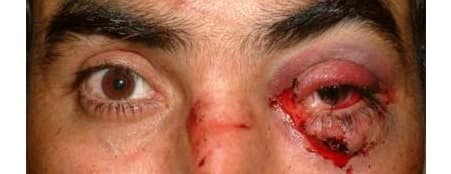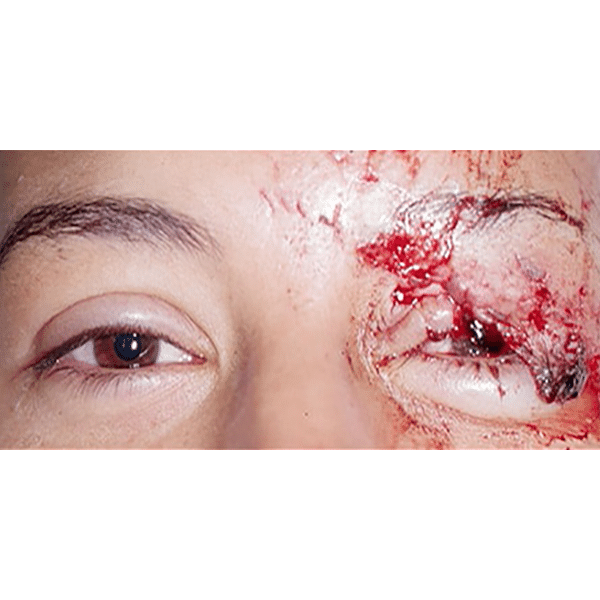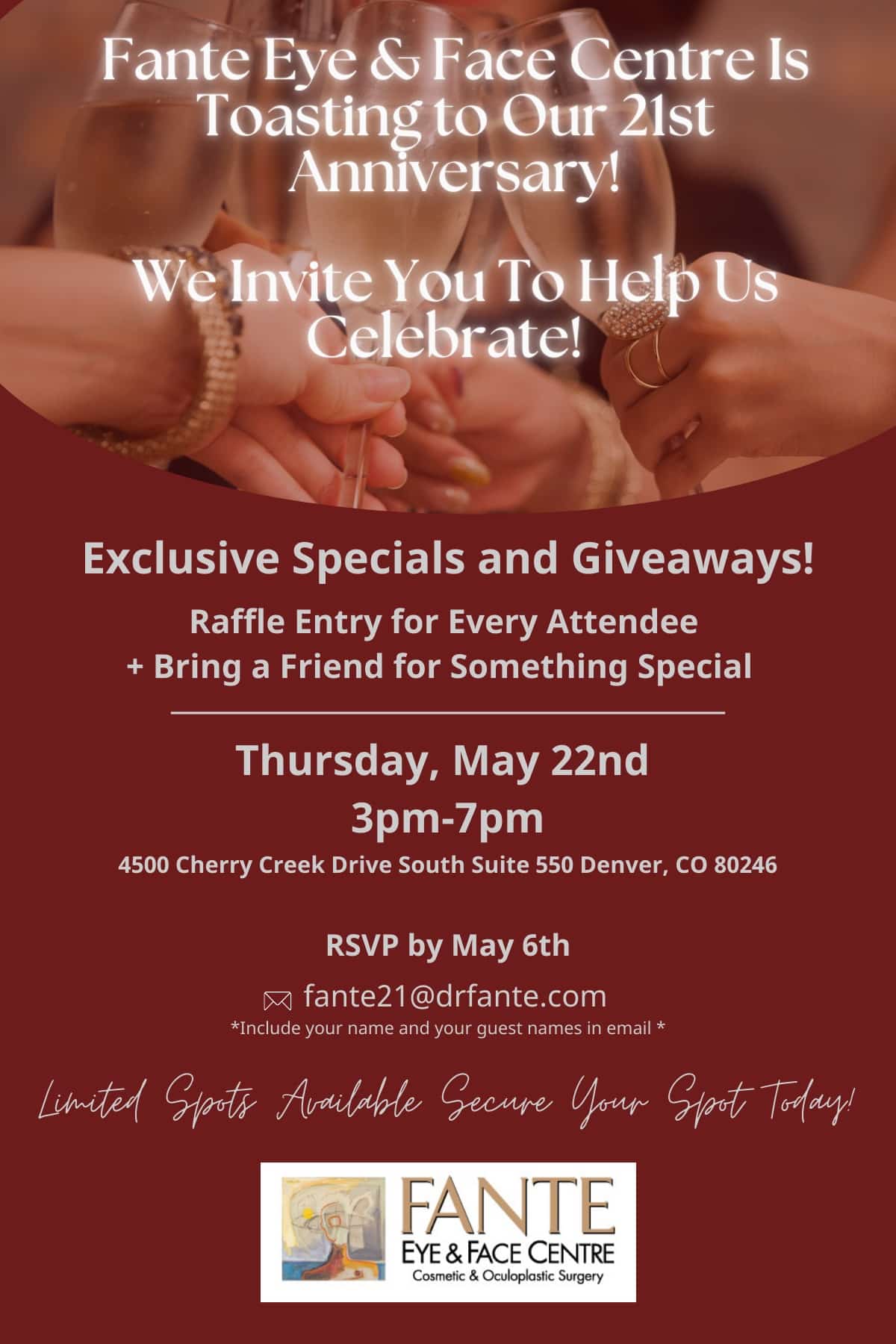Eyelid Trauma
Eyelid trauma may occur in many different ways. Common sources of trauma to the eyelid and surrounding structures include dog bites, auto accidents, sports injuries, falls, and physical altercations.
What Do I Need to Know Immediately After Experiencing Eye Trauma?
Most often, the eyelids are not the only part that is injured. Blunt trauma (such as a baseball, a fist, or a steering wheel) will sometimes break the eye socket (orbital) bones, the cheekbone, or the nose. Blunt trauma can cause bleeding in the eye socket, or damage to the eye itself that could lead to glaucoma, retinal damage, and other problems. Some of these can rarely cause blindness, and urgent evaluation at an emergency room is recommended.
If the eyelid trauma is caused by a sharp object (such as glass, a knife, a fishhook, or an animal’s tooth), there may be serious injuries to the eye or to nearby muscles and nerves. Again, it is prudent to seek an urgent evaluation at an emergency room, even if the eye itself seems ok.
If you have experienced an injury to the eye that has caused any loss of eyesight or is bleeding profusely, contact a local emergency room for a thorough evaluation. The simplest wounds can be repaired by the emergency doctors, but others will require a specialist such as Dr. Fante for the initial repair or for subsequent reconstruction. Fortunately, initial repair of the eyelids can be safely delayed for a day or two, so that once any eyeball injuries have been assessed or ruled out, then consultation for eyelid repair can occur.
Eyelid trauma often involves a laceration to the tissue of the upper or lower lid. It is important that a surgeon evaluates the skin as well as the underlying muscles and the tear ducts, as each level of injury requires specific repair techniques.
Who is a Candidate for Reconstructive Surgery After Eyelid Trauma?
Even if an injury to the eye has not damaged the eye itself, there are reasons to consult with an oculoplastic surgeon regarding reconstructive surgery. If left untreated, an eyelid laceration can have long-term implications for appearance as well as vision. Cuts that penetrate the eyelid tissue may damage the muscles that operate the opening and closing of the eyelid, leading to permanent drooping (called ptosis), or difficulty closing the eye. At the very least, eyelid injuries may pose a risk for scarring and deformity.
An injury may also affect the lacrimal sac or lacrimal gland. The lacrimal gland is a small structure that sits at the upper, outer corner of the eyelid. Conversely, the lacrimal sac is located beside the bridge of the nose, at the inner edge of the eye. The lacrimal structures are involved in the production and drainage of tears. Damage to either can result in excessive, persistent tearing or eye infection.
Adults and children who have sustained damage to the eyelid and are in good general health may be good candidates for eyelid surgery. After a thorough assessment, necessary treatment can be discussed.
What Trauma Can Be Corrected With Surgery?
Reconstructive eye surgery is commonly performed to repair trauma caused by sporting injuries, dog bites accidents, and other instances that cause blunt or sharp trauma to the eye area.
Are There Non-surgical Options for Correction of Eyelid Trauma?
Eyelid lacerations in which the eyelid margin is intact may be repaired with sutures. This can be done with local anesthetic and takes a short time. However, if the eyelid margin has been severed, surgery is the best option for treatment that restores proper alignment, structure, and appearance to the eyelid.
What is the Recovery Like After Reconstructive Eyelid Surgery?
Soon after reconstructive eyelid surgery, a topical antibiotic ointment is applied to the surgical area. This ointment may be applied during the first week after surgery. Post-operative instructions will outline how often antibiotics should be used. In addition to topical medication, an oral antibiotic may also be prescribed. For the first few days after surgery, cold compresses may be applied periodically to improve comfort and reduce swelling and bruising.
Swelling may be pronounced for several days after reconstructive treatment. This is due to the combination of trauma from the initial injury and the surgical repair itself. Usually, patients see a dramatic improvement in swelling within the first two weeks of recovery. Full healing occurs over several months.
A follow-up office visit takes place a week to 10 days after reconstructive surgery to observe progress and remove sutures. As healing continues to progress, patients should expect to be able to blink and close their eyes completely. The eyelashes should have a correct anatomical position and should not rub against the eyeball. Tear production and draining should be normal.
Finally, the goal is to have the best possible scar with the least effect on normal appearance. These are the objectives of eyelid reconstruction.
Will Reconstructive Eyelid Surgery Affect My Eyesight?
Vision impairment is a rare complication of eyelid reconstruction. While vision may appear slightly blurry during the initial recovery from eyelid surgery, full clarity is expected to return as the irritation from the eye injury and surgical repair subsides.
The potential for vision disruption is usually discussed during the consultation for corrective eyelid surgery if the injury has caused damage to the eyeball.
Dr. Fante are experienced and esteemed oculoplastic surgeon who prioritizes comfort for patients of our Denver practice. He has obtained two separate board-certifications and is a Fellow and the future President of the American Society of Ophthalmic Plastic and Reconstructive Surgery.
As noted above, for any acute injury with loss of eyesight, immediately seek help at the nearest emergency room. For assistance in handling other eyelid trauma, call us at 303-839-1616.
Schedule a Consultation
If you are interested in surgical or non-surgical treatment for eyelid trauma, contact our Denver office today! Call 303-839-1616 to schedule a consultation with facial plastic surgeon Dr. Robert Fante.




